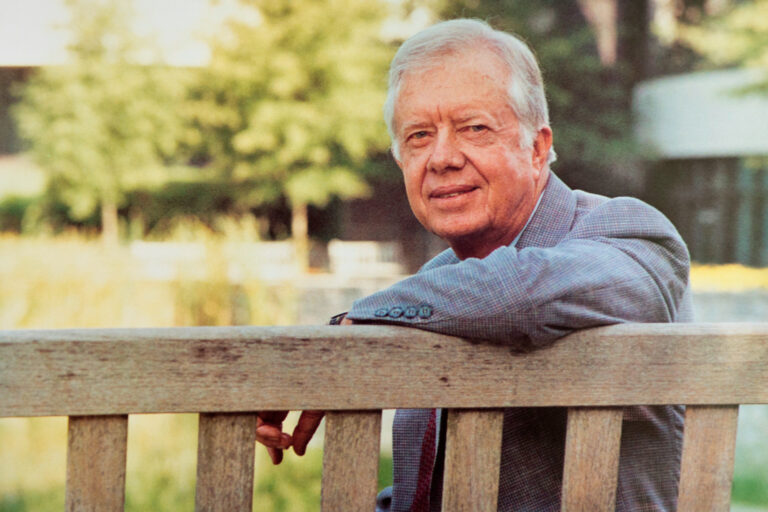Lauren Caldwell
Shortly after his election in 2008, President Obama launched the Open Government Initiative, an effort to increase transparency, participation and collaboration in the federal government. The White House website noted that government data had traditionally been inaccessible to the public:
“For too long, the American people have experienced a culture of secrecy in Washington, where information is locked up, taxpayer dollars disappear without a trace, and lobbyists wield undue influence. For Americans, business as usual in Washington has reinforced the belief that the government benefits the special interests and the well-connected at the expense of the American people.”
The initiative introduced a number of websites to offer raw government data directly to the public. On Data.gov, citizens can access government datasets from a variety of disciplines — from National Science Foundation research grants to the FDIC failed bank list. On USASpending.gov, citizens can download federal spending data by location, year, agency or category — for example, all spending on Department of Defense contracts in 2010.
Yet the mere provision of big data is not enough, as a recent World Bank blog post argued: It is essential to marry big data with human intuition — to identify trends among vast datasets, to draw conclusions, and to solve problems. This is where private sector innovation enters the equation.
Data Jams and Datapaloozas
A primary objective of the Open Government Initiative was to “make it easier for entrepreneurs, researchers and journalists to use data to do interesting things,” said Charles Worthington, a Presidential Innovation Fellow at the Department of Energy. “That’s where hackathons, data jams, and datapaloozas come in.”
Todd Park, White House Chief Technology Officer, launched the first data jam in March 2011. He invited experts in the health care and technology industries to conceptualize innovative applications that used open datasets from HealthData.gov. For example, a group of emergency room doctors created iTriage, a free mobile app that identifies the nearest hospitals and specialists, and provides detailed information about medical conditions, treatments and procedures.
Since then, several federal agencies have hosted data jams to find innovative solutions to national challenges with the help of government datasets. The data jams are co-hosted by government agencies, industry leaders, and start-up incubators around the country. All data jams follow a common structure, according to former Energy Data Initiative Director Ian Kalin:
- Assemble innovators and entrepreneurs from the government, non-profits, educational institutions and private sector
- Introduce open government datasets and relate them to national challenges
- Form small groups to brainstorm products, services, and technological tools that could solve national challenges and be created within 90 days
- The large group votes on the most promising products
- Individual data jam participants volunteer to create new products within 90 days
Worthington compared the data jam teams to “mini-companies,” composed of multidisciplinary experts with the ability and drive to put ideas into practice.
One of the Department of Energy’s most well-known data initiatives resulted from an energy data jam. The Green Button Initiative began as a discussion among data jam participants: Why don’t consumers have access to their home energy usage data? The idea went public at the 2012 White House Energy Datapalooza, an event for entrepreneurs, software developers, energy experts, and policy makers to demonstrate clean energy and energy efficiency mobile apps and web-based services.
The White House called for utilities to provide their customers with easy and secure access to energy usage information: By clicking a green button on utilities websites, customers can securely download their data, and use the information to better manage their energy consumption. Today, thirty-five utilities and electricity suppliers are participating in the initiative, reaching 36 million homes and businesses.
Upcoming events include: the Energy Education Data Jam in Washington, D.C. (March 27, 2014); a White House Datapalooza (May 2014); and New York Energy Week (June 16-20, 2014).
Hackathons and App Contests
The federal government also engages the public through hackathons and app contests. Hackathons often take place over a weekend, beginning with a Friday night introduction to objectives and datasets, and concluding with team demonstrations of new mobile apps and web services.
Unlike data jams, the primary purpose of a hackathon is not to assemble a viable product — there’s just not enough time. Instead, the goal is to raise awareness of new datasets, and to teach developers how to use new technology, Worthington said.
Of course, hackathons have another objective: They’re a lot of fun. Hackathons bring together like-minded people who are excited and open to new ideas, Worthington said. Strangers join forces in a twenty-four hour sprint to the deadline. Some hackathon participants meet future business co-founders, and go on to create successful products together.
Between January 24 and 25, the Department of Energy and 1776, a Washington, D.C. startup incubator, hosted an “Apps for Energy” hackathon. The event invited software developers, energy professionals and designers to create applications that tackle the country’s energy challenges. More than 100 people and twelve teams participated in the hackathon.
One team created an iPhone app that estimates the energy cost of a real estate listing, using information from Zillow and the Buildings Performance Database, a government dataset that compares energy performance among similar buildings across the country. Another team created a search engine that can more efficiently search data from the Energy Information Administration.
The DOE-1776 hackathon was held in preparation for the American Energy Data Challenge, a four-part, year-long $100,000 prize contest for web and mobile applications that solve problems using open government datasets. The first challenge, which was held between November and December 2013, focused on “generating new ideas for using energy data to create high-value products, applications, services and research.” In the second challenge, which ends in March 2014, teams must bring these ideas to life.
Government Innovators
The big data revolution has introduced unprecedented opportunities for collaboration between policymakers and technology industry experts.
The Presidential Innovation Fellowship was established in 2012. The program seeks leading innovators from the private sector, non-profits and academia, and matches them with federal agencies where their skills can make a difference — saving lives, saving energy, saving taxpayer money, and creating jobs. The fellowship lasts between six and twelve months.
Worthington, who is applying his app-building expertise to open data initiatives, said he was drawn to the fellowship because he wanted to make a difference.
“In many ways, the government has the opportunity to work on the most interesting challenges — like health care, energy and space exploration,” Worthington said. “No one else gets to work on these problems in the same way. There is a huge opportunity to apply techniques and best practices in web and mobile apps to government challenges.”
The application period for the next group of Presidential Innovation Fellows will end on April 7, 2014. While technology skills and entrepreneurial experience are beneficial to many PIF roles, the program seeks a variety of skill sets, according to the White House website.
To learn more about open data initiatives, read Ian Kalin’s article in the upcoming print issue of the SAIS Review of International Affairs.



